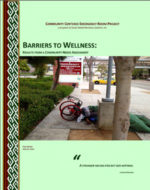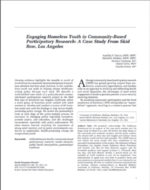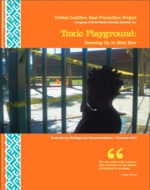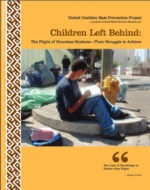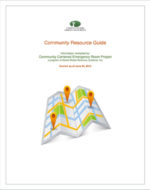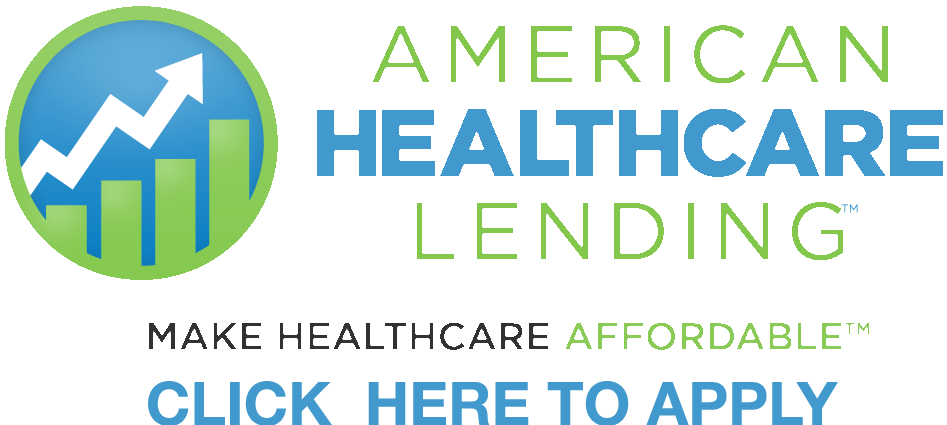Prevention
Our mission is to engage the most vulnerable populations to challenge systemic conditions and social disparities that threaten a healthy environment.
Call Us Today 877-507-6242
Prevention Services
The multi-faceted needs of a community are unique and complex, and require strong measures to address them. To this end, SMRS devotes an entire department aimed solely at lessening the harms related to alcohol and other drugs (AOD). Utilizing the US Department of Health and Human Services, Substance Abuse and Mental Health Services Administration’s recognized science-based principles, SMRS (through its Prevention Department) employs a range of social-organizing strategies to address institutional, social as well as other health concerns.
Prevention is first and foremost about partnerships; it is about motivating community members to seek and achieve policy and normative changes in local institutions. Prevention is an integral part of a continuum of care that includes intervention and treatment/recovery. Experience has shown that the proper application of prevention strategies impact all members of the community, those who have never consumed as well as those recovering from substance abuse. Our prevention programs utilize a broad array of community organizing and learning activities including skill development, community involvement, AOD-free alternative activities, cultural awareness, land-use understanding, neighborhood assessment, and action plan development and execution as well as civic participation.
Alcohol & Other Drugs
The consumption and abuse of alcohol and other drugs threatens lives, families, and communities, resulting in immeasurable pain and suffering for those directly and indirectly impacted. According to a Marin Institute Report, The Annual Catastrophe of Alcohol in California, the State’s cost of alcohol use is $38 billion annually. This approximates $1,000 per each California resident. To be more explicit, we spend annually the equivalent to a Northridge-style earthquake on alcohol problems, which are preventable, and require serious and immediate attention.
Alcohol alone causes a disturbing array of health problems from cirrhosis of the liver to lost productivity to sexually transmitted diseases. Not withstanding traffic collisions and the injury that results from it, 26% of deaths are caused by alcohol. This means one person dies every hour due to alcohol use in California. In addition to lost lives, jobs, housing, and broken relationships, astronomical costs are linked to hospital visits and the deployment of governmental services including law enforcement. In high risk contexts, there is a thin line between AOD consumption and abuse. Those living with mental illness as well as those subjected to multiple stressors including peer pressure, social isolation, job insecurity, and poverty are vulnerable and easily succumb to pro-use norms and messages. This is especially the case when AOD are readily available. Drugs in this context are often used to address stress, anguish, and loneliness and not for medical, spiritual, or recreational purposes.
Skid Row Our Community
Los Angeles is a city of contrasts — both great affluence and vast poverty. Just blocks from the gleaming high-rises is skid row, the hub of social services including drop in-centers, missions, shelters, job training centers, HIV/AIDS services and the nation’s largest homeless concentration. UCEPP has been working in this community since 1996.
The stereotypical image of skid row is all too familiar: derelicts, winos and drug addicts, men who supposedly choose a life on the street surrounded by soup kitchens and missions. Yet in Los Angeles, as in other cities, this stereotype has changed dramatically in the last decade as families with children, the working poor, and people in recovery from addiction represent a large portion of this community’s population. Living in this part of town makes sense for them – economic sense, as housing is affordable, and geographic sense, as housing is close to their jobs. In addition to residents and children, this community has a high level of business activity including wholesale fish markets, food manufacturing, garment and toy factories as well as other types of manufacturing.
Many problems affecting the safety and livability of this neighborhood are related to alcohol and other drug use. In addition to extreme poverty, a major challenge confronting our community is rampant drug dealing and use. Although the Central Division of the Los Angeles Police Department is also located in the heart of the community, many illegal activities are overlooked. This in part is due to the challenge of addressing the complex social problems linked to poverty, mental illness, and substance abuse. Therefore, it is imperative to develop creative social-organizing strategies to address them.
Despite overwhelming obstacles, a community has formed and is thriving. Proof of its existence is visible through community efforts to improve the quality of life, designate the area as the largest community in recovery, and challenge institutional neglect. This neighborhood is comprised of a mosaic of people: homeless, working poor, immigrants, seniors, domestic violence victims, families with children, the mentally disabled, and those in recovery. Although others have written off this part of town we have found that a tremendous potential for change exists here. Residents have been victorious in their effort to hold area business owners accountable for condoning illegal conduct, including alcohol and other drug sales and use as well as prostitution. Their participation comes despite incredible odds; many have overcome addiction, abuse and/or homelessness. They are not the typical neighborhood to take action, however, as a result of their activism; policy-makers have taken note of their concerns.
Our long-range goal is to create a permanent self-sustaining constituency to improve the community – a community that is perhaps the largest “community in recovery”. We want to help give voice to the residents, give them access to forces that can help them reclaim their community, and equip them to become advocates for change.
Community Involvement
Despite mainstream media portrayals of places like skid row, we have witnessed and initiated numerous campaigns that challenged these negative views of this and other neighborhoods and their inhabitants. Experiential knowledge and the neighborhood’s diversity have produced numerous solutions to community problems. Creating forums for input and participation are essential to utilizing this oftentimes untapped resource as well as building and strengthening neighborhood ties. To this end, our programs include an array of activities and has spearheaded numerous campaigns.
Nuisance abatement has been one of our strongest ongoing campaigns by utilizing the City’s regulatory process to hold irresponsible business owners accountable. This is a powerful tool for decreasing drug-related activity by placing remedial operational conditions on local institutions and/or forcing them to close. Community members monitor locations, document problems, attend public hearings, meet with local elected officials, partner with law enforcement, and protest government inaction. This increased civic participation serves as a buffer to risk factors and is the spark that inspires positive neighborhood change.
Implementing prevention measures is our goal. Prior to an institution becoming a public nuisance we become proactive in shaping policies. The initial request for a permit to sell alcohol provides an opportunity to suggest operational conditions that may prevent the store from becoming a future problem. We have also worked with local government agencies and major developers to create specific plans addressing multiple alcohol uses in the same project. This partnership has led to model revitalization projects that regulate alcohol venues and is the impetus for the report, Using Alcohol to Fuel Community Revitalization: A Cautionary Tale.
Our work is led by coalition members dedicated to neighborhood improvement. They have collected petitions, conducted street clean-ups, and hosted community events. Community members work to protect their community. We also host numerous alcohol and other drug free alternative activities that include but are not limited to the photography club, a street-ball league meeting, a senior activity, and a cultural study group.
Violence Prevention
Violence has always been present throughout our human existence. According to the World Health Organization report on violence and health “violence results in more than 1.5 million people being killed each year, and many more suffer non-fatal injuries and chronic, non-injury health consequences as a result of suicide attempts, interpersonal violence (youth violence, intimate partner violence, child maltreatment, elder abuse and sexual violence) and collective violence (war and other forms of conflict). Overall, violence is among the leading causes of death worldwide for people aged 15-44 years old”. Ironically, violence is preventable and its impact can be greatly reduced.
Evidence has emerged showing the intimacy between alcohol and violence and the importance of directing interventions at institutions as well as changing cultural and social norms that promote violence. In particular, social norms are extremely influential in shaping behavior and may buffer violent behavior; however, they can also encourage it. In many cultures, corporal punishment is an acceptable way to rear a child or resolve conflict — feeding the cycle of interpersonal violence.
Notwithstanding these complex issues, UCEPP has endeavored in the field of violence prevention through funding by The California Wellness Foundation (TCWF). Our youth leadership project aims to reduce violence in skid row and cultivate future champions. Our existing campaign to highlight the best of skid row and draw the assets of our community that have long been forgotten is well underway. Additionally, youth leaders are focusing their attention to address interpersonal violence as it is inextricably related to social factors in our community, such as unemployment, inordinate levels of law enforcement, income inequality, and access to education, among others. Our experience has taught us that successful interventions must also be directed to address social factors fueling interpersonal violence. We are optimistic that the creativity and passion of our youth will aid existing efforts to improve the neighborhood and challenge negative perceptions.
Prevention Videos
United Coalition East Prevention Project
We’re Not Bad Kids


